The Best Octane Boosters You Can Buy

Octane boosters can help to improve your vehicle’s performance in many ways. Whether you’re looking for increased power, or something to stop engine pinging and knocking, you’ve come to the right place. Instead of wasting time researching dozens of octane boosters, we’re here to save you time by narrowing down your search. Below, you’ll see our picks for the best octane boosters currently available, along with plenty of information so you can learn more about octane boosters.
For more information on octane boosters, refer to our table of contents.
Table of contents
- 1. Editor's Pick: Royal Purple Max Boost
- 2. Lucas Oil Octane Booster
- 3. STP Octane Booster
- 4. Torco Unleaded Fuel Accelerator
- 5. BOOSTane Professional Octane Booster
- 6. Klotz Octane Booster
- 7. RACE GAS Race Fuel Concentrate
- Everything You Need to Know About Octane Boosters
- How Do Octane Boosters Work?
- Which Types of Cars Respond Best to Octane Boosters?
- How to Use an Octane Booster
- How Often Should Octane Boosters Be Used?
- Potential Drawbacks To Using Octane Boosters
- When and How to Use an Octane Booster
- When Not to Use an Octane Booster
- When to Use an Octane Booster
- How to Use an Octane Booster
- Recent Updates
1. Editor's Pick: Royal Purple Max Boost
Our top-performing octane booster is the Royal Purple Max Boost, designed to increase horsepower and stabilize fuel while reducing knocking and pinging. This racing formula raises octane rating up to 30 points or three numbers, so it’s worth mentioning that it’s not street legal. Max Boost replaces lead additives for the protection of non-hardened valve seats, allowing it to restore power and fuel economy while cleaning deposits from fuel injectors. It also serves the purpose of reducing power loss caused by knock-retard in computer-controlled vehicles.
Available in a 16-ounce can, Max Boost is formulated with MMT, which delivers the best octane enhancement to help eliminate engine detonation, pre-ignition, and pinging or knocking caused by low-octane gasoline. It’s formulated to work on engines equipped with carburetors, port fuel injection, direct injection, turbocharged, supercharged, and even nitrous-injected engines. Safe for oxygen sensors and catalytic converters, this octane booster is safe for use in leaded and unleaded gasoline, along with alternative fuels such as gasohol, reformulated gasoline, and all ethanol blends.
Pros | Eliminates engine knocking/pinging, lead-free ingredients, increases octane levels more efficiently than most products, stabilizes fuel |
Cons | Not street legal |
2. Lucas Oil Octane Booster
Designed to promote clean fuel burn for fewer emissions is Lucas Oil’s octane booster. This product can be used on fuel-injected and carbureted engines and is safe for turbochargers, oxygen sensors, and catalytic converters. The company claims its octane booster has been tested and proven to deliver three times more than most other brands and will stop knocks in high-compression engines.
A single 15-ounce bottle can treat up to 25 gallons of fuel. One benefit of this product is that it is purchased in bulk, so you don’t have to constantly take trips to the store. A 12-pack can last you several months, depending on how often you drive.
Pros | Keeps oxygen sensors and spark plugs in better condition than most octane boosters, may be purchased in bulk (12 pack) |
Cons | Thick neck design makes it hard to squeeze into certain gas tanks |
3. STP Octane Booster
Our choice for the best budget octane booster comes from STP. It’s an affordable option available in a 5.25-ounce bottle, which can treat up to 21 gallons of gas. There is also a 12-ounce option, which treats up to 28 gallons. This is a two-in-one formula that boosts octane and cleans the fuel intake system, helping restore power and acceleration to your vehicle. Like other octane boosters, it will help reduce knocking and pinging. This product is compatible with cap-less gas systems.
The company recommends that you use its octane booster regularly when you fill up your gas tank. STP has been around for over 60 years and is among the most trusted names in automotive care.
Pros | Price, dual purposes, increases octane levels and cleans the fuel intake system, compatible with cap-less gas systems, trusted brand |
Cons | Doesn't increase octane levels as much as some other products will |
4. Torco Unleaded Fuel Accelerator
Torco’s Unleaded Fuel Accelerator uses a blend of components to transform premium pump gas to closely resemble race fuel. This octane booster will significantly raise the octane of premium fuel (91 octane) to 102 octane when using a 32-ounce bottle with 10 gallons of gas. When using a 32-ounce bottle with 5 gallons of fuel, expect 105-octane performance.
It’s an extremely effective race fuel concentrate that will not harm oxygen sensors or catalytic converters. It is one of the more expensive options on our list since it’s sold in a 32-ounce bottle, but it’s great for getting every bit of performance out of your engine. Unfortunately, like racing fuel, it does have a very short shelf life, so you’ll want to use it as quickly as possible.
Pros | Racing fuel concoction which effectively combats engine pinging, helps vehicles crank over more smoothly, impressive boost in performance |
Cons | Has a tendency to leave reddish residue on spark plugs, very short shelf life |
5. BOOSTane Professional Octane Booster
If you’re looking to really boost the performance of your engine, take a look at the BOOSTane Professional Octane Booster. This product can raise your fuel’s effective octane to as high as 116. More importantly, however, you can customize your fuel for your exact engine tune by using the BOOSTane smartphone app. This octane booster can also protect against the negative side effects of using ethanol.
Along with boosting performance, using this product will help restore lubricity, prevent flakey sediment, depositing, and corrosion, and prolong engine life. Safe for use on all gasoline engines, this octane booster will also help eliminate knocking and pre-detonation.
The company says this is the only octane booster in the market that provides independent third-party testing results, and it’s the only octane booster to win a SEMA YEN Product of the Year award.
Pros | BOOSTane app which allows users to customize their mixtures, reduces likelihood of pre-detonation, gas engine friendly, SEMA YEN Product of the Year |
Cons | Some minor inconsistencies with product calculator have been experienced |
6. Klotz Octane Booster
Designed to increase pump gasoline octane up to 10 numbers is Klotz’s octane booster. This is a tetraethyl lead substitute for added lubricity and will stabilize the flame front while controlling burn speed. It can also serve as a fuel system cleaner, keeping your injectors or carburetors fresh.
Available in one-pint or one-gallon sizes, you do need to be careful when using this octane booster—it will discolor paint, plastic, and fiberglass if it’s accidentally spilled anywhere onto the vehicle.
Pros | Promotes lubricity, maintains a steady burn, can be used with cars, motorcycles, pit bikes, and other gasoline vehicles, E85 friendly |
Cons | Will penetrate clear coat and ruin paint if spilled |
7. RACE GAS Race Fuel Concentrate
Another race fuel concentrate is available from RACE GAS, featuring a patented unleaded formula that will raise the octane of pump gas up to 105. This product will not harm catalytic converters, O2 sensors, or fuel system components and has been tested and proven in any engine that requires high-octane fuel, including 2-stroke and E85 engines. Intended for off-road use only, this octane booster contains no alcohol.
The company says its race fuel concentrate has been tested in drag cars, road race cars, rally cars, snowmobiles, ATVs, motorcycles, PWC, boats, and even tractor-pull tractors. Two ounces of the concentrate will raise the octane of pump gas by 40 points or four full numbers, up to 105 octane.
This product is offered in a 32-ounce bottle, and you can also purchase it in bulk—6 or 12.
Pros | Raises pump gas up to 105 octane, compatible with 2 stroke and E85 engines, contains no alcohol, can be purchased in bulk |
Cons | Oxygen sensors could activate if used in large quantities, fuel injector tips may be covered in a light residue over time |
Everything You Need to Know About Octane Boosters
Just like their name suggests, octane boosters are designed to raise a vehicle’s octane rating. For most car owners, that means using a bottle of octane booster when refueling their vehicle to give it better performance, fuel economy, and more. Now, octane boosters are admittedly a subject of much speculation and debate within the automotive community, so the main thing you need to know is that an octane booster’s efficiency will vary heavily based on the vehicle.
Fuel octane is an important factor when it comes to the gas we use in our vehicles, but the big debate is whether octane booster additives are necessary for a car to run at peak performance. In the following sections, we’ll take a look at how octane boosters work and hopefully the information we provide will allow you to draw your own conclusions on whether or not you need octane booster.
How Do Octane Boosters Work?
Octane boosters are part of the “fuel additive” category, which typically includes fuel enhancement and fuel stabilization products. Octane boosters are a fuel enhancement product by increasing the octane rating of the fuel, enhancing a vehicle’s performance. Generally, as octane ratings increase, pre-ignition becomes more difficult. This results in a higher compression ratio and better vehicle performance.
When you’re shopping for octane boosters, you’ll notice the ingredients used in most of the products are fairly straightforward. They are typically a blend of tetraethyl lead, alcohols (including ethanol), traces of methylpropyl, manganese, toluene, and ethers. Products will vary on the blend of these ingredients, but these are normally the base for most octane boosters.
It’s worth noting that unleaded octane boosters can be “healthier” for your car, since leaded fuel has a tendency to affect or even harm oxygen sensors. Octane boosters from companies such as Lucas Oil and Torco are good options to avoid potentially damaging sensors.
Most octane boosters are also designed to prevent or eliminate pinging and knock. When you hear about an octane booster being anti-knocking, that means additional ignitions are not experienced within your cylinder when the booster is being used. Normally increased octane levels mean extra compression is necessary to induce detonation. Knocking is detrimental to an engine, which is why it’s important to prevent it from occurring.
Which Types of Cars Respond Best to Octane Boosters?
Not surprisingly, high-performance vehicles tend to benefit most from octane boosters. Automakers design and manufacture vehicles to respond to fuel within a certain octane range, so that means owners of ordinary sedans and other more conventional (non-performance) vehicles may be disappointed by how octane boosters perform when used.
But in certain situations, octane boosters have proven to actually work. For example, engines that require high octane levels but have been routinely subjected to low octane fuel will have decreased performance. In that situation, that engine could benefit from octane booster. It’s always recommended to check whether your vehicle needs high-octane fuel to perform well before adding an octane booster. Otherwise, there’s a good chance you may not notice any major difference when using octane booster. You can typically find this information in your owner’s manual and understanding a vehicle’s required octane level is better than blindly spending money on octane booster hoping for more performance.
But as we mentioned before, octane boosters serve other purposes besides just boosting performance. If you’re experiencing engine knocking or pinging, bumping the octane level of your fuel could help prevent that from occurring.
How to Use an Octane Booster
One of the most important things to remember when it comes to octane booster is using it before you need the results. So if you’re planning for a day at the track or you need to enhance the performance of your vehicle for a specific event, fuel treatments should be used weeks prior to when you actually need it. That’s because all engines require a brief adjustment period, which allows your car’s computer to recalibrate to any octane adjustments.
This is also a reason why the regular use of some octane boosters have shown to be more effective than using them occasionally or even one-time use.
To start, make sure you’re purchasing the right octane booster for your vehicle. Gauge the octane level that your fuel will be boosted to, and make sure you’re using the correct amount for the fuel going into your tank. Some octane boosters are more customizable than others, allowing you to even calculate a preferred octane level.
Make sure when using the octane booster to not come into contact with the liquid itself. Many of the ingredients in octane boosters are carcinogenic if they come in contact with or absorbed by the skin.
It’s also very important that you add your octane booster to your fuel tank when it’s empty or nearly empty. This will allow it to adequately mix in the fuel tank while you’re pumping gas. Once you fill your tank with the octane booster and fresh fuel, let your vehicle idle for a short period of time before driving.
Lastly, take note to make sure you’re using the octane booster before it expires. Some products don’t have a long shelf life, so pay close attention to any special instructions that can be found on the bottle’s label. Normally if you have any booster left over after refueling, it’s best stored in dark places.
How Often Should Octane Boosters Be Used?
The answer to how often octane boosters should be used really depends on the car and the individual. Some car owners will use octane boosters every single time they fill up their gas tank, while others will only do it on special occasions such as a road trip or leading up to a track day. Some car owners will never even use octane boosters.
Potential Drawbacks To Using Octane Boosters
Truth be told, not every vehicle needs octane boosters. These products are often sealed in lavish, eye-catching bottles that make unverifiable claims. Some products advertise “for race use only,” and they “restore true horsepower.” Some of this is marketing speak, while in some states, it is illegal to operate a vehicle with a high octane level. It’s many of these claims that make octane boosters such a difficult product to buy. There’s a good chance you purchase a product because it looks good and claims it works well, but turns out it does nothing for your vehicle. Believe it or not, some products have been shown to reduce engine performance!
Keep in mind that regular use of octane booster could over time lead to additional wear and tear on your engine. In some cases, some products have shown to wear out spark plugs at a quicker rate. This is likely due to the use of MMT, an additive that serves as an anti-knocking compound.
When and How to Use an Octane Booster
In the right situations, octane boosters can be really beneficial. If your engine is pinging or knocking for example, you may want to consider using an octane booster to see if that makes the issue go away. Now if you think adding a bottle of octane booster will magically make your vehicle perform like it never has, you’re probably mistaken. The following sections will take a closer look at how and when to use an octane booster.
When Not to Use an Octane Booster
Before we dive into when to use an octane booster, it’s important to know when you shouldn’t use octane booster. For starters, octane boosters should never be used as a substitute for fuel stabilizers or any all-around fuel treatment product. If you know your vehicle is going to be sitting for an exterior period of time, adding octane booster to the fuel won’t help preserve it—you’ll need a different product for that.
Next, you shouldn’t necessarily use octane booster to exceed your vehicle’s proper or recommended octane level. Unnecessarily increasing the octane level of your fuel may not result in a boost to performance.
If your vehicle is having any sort of fuel injector or sensor issues, you may want to avoid using octane booster until they’re fixed. That’s because MMT, a common octane booster additive, can be harmful to those components when used over time.
Always remember that octane boosters aren’t some magical solution for engine troubles. If your check engine light is illuminated, it’s time to check with a professional to see what’s wrong—never assume bumping the octane level of your fuel will fix anything.
When to Use an Octane Booster
Now that you know when not to use an octane booster, here’s some suggestions on when to use an octane booster. If your local gas station’s fuel doesn’t have the octane level you need for your vehicle, then using an octane booster might be necessary. However, it’s typically recommended to use higher octane fuel first before using an octane booster.
If your engine is experiencing knocking or pinging, an octane booster could be extremely useful. Most boosters will decrease the chances of pre-detonation, helping prevent knocking and pinging from occurring.
For the most part, using octane boosters on a daily driver that isn’t a high-performance vehicle won’t yield a noticeable difference. If you have however, been fueling your car repeatedly with low octane gas, using octane booster will likely increase its performance. Some enthusiasts will say forced induction (supercharged or turbocharged) vehicles benefit the most from octane boosters.
How to Use an Octane Booster
For the most part, using an octane booster is fairly straightforward. It can get a little tricky if you’re having to do a mixture to reach a certain octane level. But below is a general step-by-step guide on how to properly use an octane booster.
1. Identify Your Vehicle’s Designated Octane Level
As we mentioned before, you’ll want to determine your vehicle’s preferred octane level, which can be found in either your owner’s manual or underneath the gas cap. That value lets you know the recommended octane level your car needs to perform well, based on the manufacturer. Typically when these levels are not met, cars will underperform. But keep in mind, some non-performance, commuter cars will also underperform if your octane level exceeds the recommended value. That’s why you don’t always necessarily want to empty an entire bottle of octane booster into your gas tank.
2. Choosing the Right Octane Booster
There are a few things to consider when choosing the right octane booster, aside from price and size. You’ll want to do plenty of research in determining whether you want to use a product that contains MMT or not. You may even want to pay close attention on whether a certain formula could damage your paint if you accidentally spill it on your car. Another detail is seeing whether a product is actually street legal.
3. Determine the Right Mixture
Some octane boosters advertise a substantial jump in octane level, while others are smaller numbers. When determining the right mixture, go by what’s recommended on the bottle. You want to avoid oversaturating your fuel blend with octane booster, which could cause issues long term such as prematurely eroding your spark plugs.
This is where you’ll have to find out what your octane booster’s true rating is. Products are often misleading, and those for example that claim to raise octane levels by 3 points, often do so in tenths. There are some products that raise octane levels substantially, but these are rarely street legal. One product on the market, from BOOSTane, actually has a smartphone app that will help you determine the right mixture to reach your desired octane level.
Once you’ve determined the blend you need, pour the octane booster into your tank before filling it up with fuel.
4. Give Your Vehicle Some Time to Adjust
Some owners may notice an immediate change in performance after adding octane booster and filling up the fuel tank. But as we mentioned before, it’s important to give your vehicle’s computer system some time to adjust. If you’re looking to boost performance for a track event, start using octane booster several days before, if not weeks.
Recent Updates
December 13, 2022: Removed Turbo 108 (N/A); updated product links.
April 21, 2022: Removed Picks section; updated product links. Removed Mag 1 from recommendations.
March 1, 2021: Updated with a promoted product recommendation.
We are committed to finding, researching, and recommending the best products. We earn commissions from purchases you make using the retail links in our product reviews. Learn more about how this works.
Photo credit: Tonographer / Shutterstock.com

Jason Siu began his career in automotive journalism in 2003 with Modified Magazine, a property previously held by VerticalScope. As the West Coast Editor, he played a pivotal role while also extending his expertise to Modified Luxury & Exotics and Modified Mustangs. Beyond his editorial work, Jason authored two notable Cartech books. His tenure at AutoGuide.com saw him immersed in the daily news cycle, yet his passion for hands-on evaluation led him to focus on testing and product reviews, offering well-rounded recommendations to AutoGuide readers. Currently, as the Content Director for VerticalScope, Jason spearheads the content strategy for an array of online publications, a role that has him at the helm of ensuring quality and consistency across the board.
More by Jason Siu



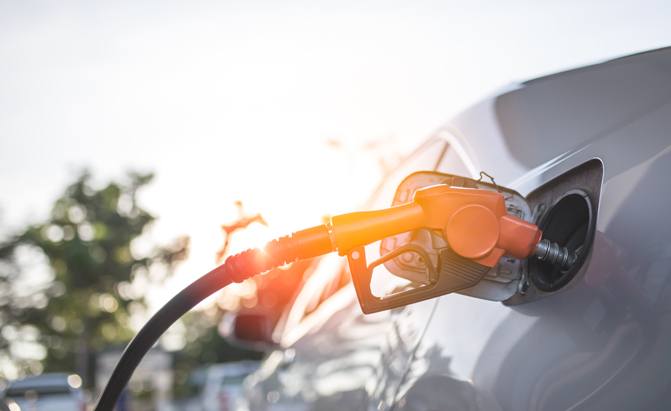





















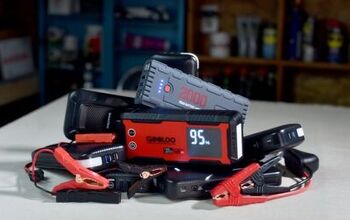
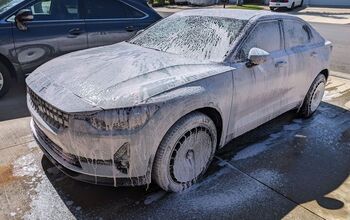
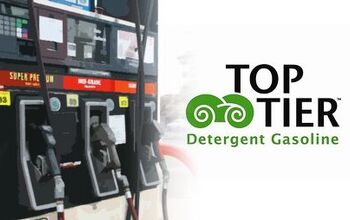

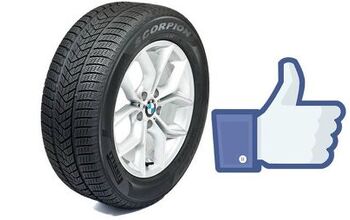

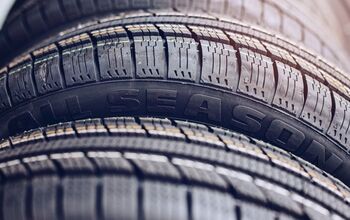










Comments
Join the conversation
please add me to your email list